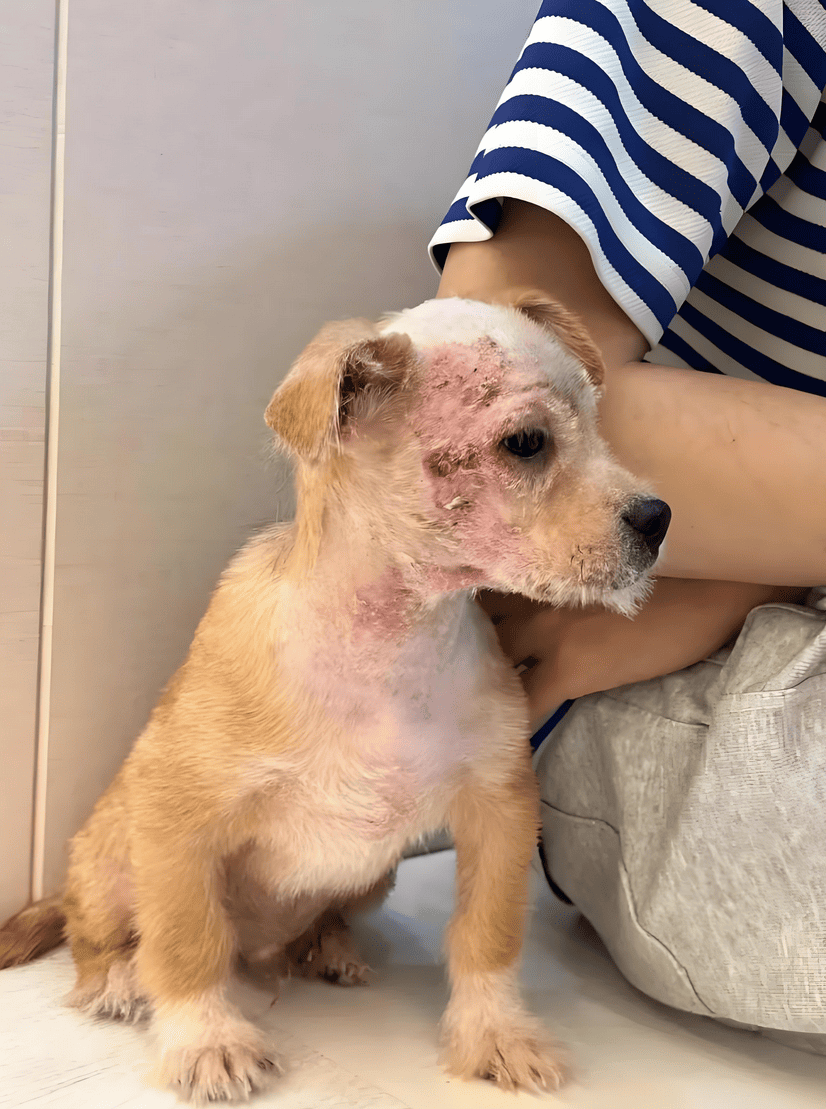What Does Ringworm Look Like on a Dog?
Ringworm is a common fungal infection that can affect dogs, causing discomfort and potential spread to other pets and even humans. Despite its name, ringworm is not caused by a worm but by a group of fungi known as dermatophytes. Understanding what ringworm looks like on a dog and how to treat it is crucial for pet owners.
What Is Ringworm in Dogs?
Ringworm (dermatophytosis) is a contagious fungal infection that affects the skin, hair, and nails of dogs. It thrives in warm and humid environments and spreads through direct contact with an infected animal, contaminated surfaces, or fungal spores in the environment.
Signs and Symptoms of Ringworm in Dogs
1. Circular, Hairless Patches
One of the most distinctive signs of ringworm in dogs is the appearance of circular, hairless patches on the skin. These lesions often have a red, scaly edge and may expand over time.
2. Brittle or Broken Hair
Dogs with ringworm often have brittle hair around the infected area. The fungus weakens the hair shaft, causing it to break off, leading to bald spots.
3. Red, Inflamed Skin
The affected skin may appear red, inflamed, and irritated. Dogs may experience discomfort and itchiness, leading to excessive scratching or licking of the area.
4. Dandruff or Flaky Skin
Some cases of ringworm cause flaky, dry skin that resembles dandruff. This symptom can make it difficult to differentiate from other skin conditions.
5. Crusty or Scabby Lesions
Advanced cases may develop crusty or scabby lesions, which can sometimes ooze or become infected due to excessive scratching.
6. Nail and Paw Pad Issues
Ringworm can also affect a dog’s nails, causing them to become brittle, rough, or deformed. In some cases, the infection spreads to the paw pads.
Where Does Ringworm Commonly Appear on a Dog?
Ringworm can appear anywhere on a dog’s body, but it is most commonly found on:
- Head and Face – Around the ears, eyes, and muzzle.
- Paws and Legs – Often seen on the feet and lower legs.
- Tail and Underbelly – Areas where the skin is more exposed.
How Do Dogs Get Ringworm?
Dogs can contract ringworm through:
- Direct Contact – With an infected animal or person.
- Contaminated Objects – Such as bedding, grooming tools, or furniture.
- Environment – Fungal spores can live in the environment for months, making reinfection possible.
Diagnosing Ringworm in Dogs
1. Wood’s Lamp Examination
A veterinarian may use a Wood’s lamp (UV light) to check for fluorescence, which some types of ringworm fungi emit.
2. Fungal Culture Test
A sample of the affected hair or skin is taken and cultured to confirm the presence of dermatophytes.
3. Microscopic Examination
A vet may examine hair and skin samples under a microscope to detect fungal spores.
Treatment Options for Ringworm in Dogs
1. Topical Antifungal Treatments
Medicated shampoos, ointments, and creams containing miconazole or chlorhexidine can help eliminate the fungus.
2. Oral Antifungal Medications
In severe cases, veterinarians may prescribe oral antifungal medications such as itraconazole or terbinafine to treat the infection from within.
3. Environmental Cleaning
Since ringworm spores can persist in the environment, thorough cleaning and disinfection of the home, including bedding and grooming tools, are essential.
4. Isolation and Quarantine
Infected dogs should be kept away from other pets to prevent the spread of the infection.
Preventing Ringworm in Dogs
- Regular Grooming – Routine bathing and grooming help detect skin issues early.
- Disinfection – Clean pet bedding, toys, and grooming tools regularly.
- Limit Exposure – Avoid contact with infected animals.
- Healthy Diet and Immune System Support – A strong immune system can help fight off infections more effectively.
Can Humans Get Ringworm from Dogs?
Yes, ringworm is a zoonotic disease, meaning it can spread from dogs to humans. If your dog has ringworm, practice good hygiene, wash your hands after handling them, and seek medical advice if you develop skin lesions.
When to See a Veterinarian
If you notice hair loss, red patches, or other symptoms of ringworm on your dog, consult a veterinarian for proper diagnosis and treatment. Early intervention can prevent the infection from spreading and speed up recovery.
Final Thoughts
Ringworm in dogs is a treatable condition, but it requires diligence in treatment and prevention. By recognizing the symptoms early and following a veterinarian’s guidance, you can ensure your dog recovers quickly and remains healthy.
Understanding what ringworm looks like on a dog is the first step in protecting your pet and household from this contagious fungal infection. If you suspect your dog has ringworm, take action immediately to stop its spread and ensure their well-being.







